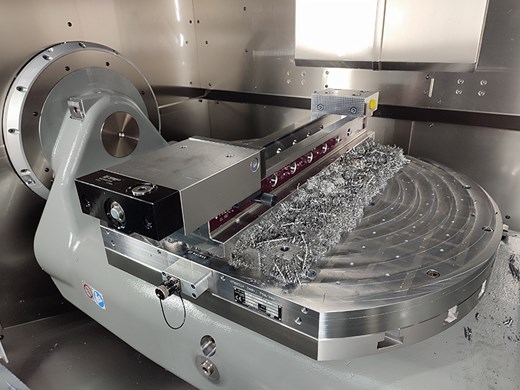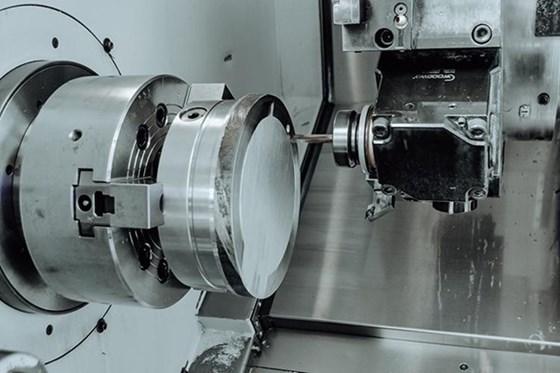
Installing magnetic chucks in a production facility brings higher manufacturing capacity, speeds up processes, cuts down costs and increases profits — on condition that you pick the right type of magnetic chuck. Here’s a checklist to help you choose well.
With Walmag’s 30+ years of experience with magnetic chucks and lifting magnets, we feel confident enough to share our knowledge about various types of magnetic chucks. We’ve put together a helpful checklist for finding the most suitable magnetic chuck for any production facility. Go through it to make your preliminary choice, or at least have your answers ready — to questions any producer/seller of magnetic chucks will ask you.
|
OUR TIP: Still on the fence whether getting a magnetic chuck is the right move? Have a look at our comparison of magnetic vs. manual clamping, and rest assured that magnetic chucks will indeed make your production quicker, cheaper, and more effective. |
Checklist for Choosing a Magnetic Chuck
1. Machined Workpieces
Various properties of machined workpieces have to be considered when choosing a magnetic chuck:
Material
Magnetic force isn’t universal; some materials enhance it, some make it weaker. A workpiece needs to be made from a ferromagnetic material to be compatible with a magnet. The magnetic field becomes the strongest for low-carbon steel workpieces (with carbon contents within hundredths of a percent). High-carbon steel and alloy steel need to be clamped more forcefully as they contain multiple non-magnetic elements.
|
OUR TIP:Magnetic force is affected by a number of elements that all need to be carefully considered. If you want to know more about factors affecting the magnetic force, the full article is here. |
Thin Workpieces
Standard magnetic chucks securely clamp a 12 mm thin workpiece. Workpieces thinner than that require a magnet with denser poles to be clamped safely. Or you can use an additional top pole plate with the chuck — an imprint of the workpiece is milled in the pole plate, creating a form of sorts. When machined, the form holds the workpiece in place as the workpiece fits in the form snugly.
Using a strong magnetic chuck is not a solution for clamping thin workpieces as they let the magnetic field pass through them. The flux lines of the magnetic field close behind the workpiece, too far from it, which weakens the magnetic force. The workpiece will budge, move to the side, or even deform.
|
OUR TIP: A custom-made magnetic chuck is the way to go in case you need to clamp thin workpieces (of 4 mm in cross-section). Here’s how we proceed when customising magnetic chucks for our customers. |
Surface of the Workpiece
The ideal workpiece for machining is flat, clean, and even. Dirt, dust, impurities, and additional layers (coats of paint or polish) always decrease a magnet’s holding force. Similarly, perforated workpieces and workpieces with openings will always be held less strongly by a magnet.
With these specific pieces, it’s best to calculate the magnetic force of a magnet individually. Or borrow a magnetic chuck to try it out. We do lend magnets in Walmag — we completely understand that some of our clients need to test the magnets before they take the plunge and buy them.
|
OUR TIP: If you want to crack the code in and calculate the sufficient magnetic force, first read all about the types of forces that affect a magnet. |
Shape of the Workpiece
For machining circular workpieces, we recommend getting a round magnetic chuck — a popular solution for machining saw blades, ring bearings, cylinders, and other round parts. A circular magnetic chuck allows you to perform multiple machining operations at once, without having to re-clamp the workpiece. Clamp your round workpiece just once and machine its inner and outer surfaces, as well as its front.
|
OUR TIP: Learn more about round magnetic chucks here. |
Even vs. Uneven Workpieces
To safely clamp a workpiece on a magnetic chuck, you need to clamp it evenly in multiple places. This is difficult to do with uneven workpieces — they need to be evened out before they’re clamped.
Our most popular Mastermill magnetic chuck deals with uneven workpieces by using firm and flexible pole extensions. Firm extensions are used to make a reference level, and flexible pole extensions are added to copy the shape of the workpiece. Once you turn the magnetic chuck on, flexible pole extensions fixate the workpiece on the reference level, making it perfectly even.
|
OUR TIP: Learn more about our most popular magnetic chuck — Mastermill to find out what it’s capable of. |

Neostar Round Magnetic Chuck
2. Machining Operations
To pick the best magnetic chuck, make a list of all the machining operations you are going to perform on it. On our website, we divided our magnetic chucks into categories according to types of machining.
The most common machining operations are:
Milling
Need an all-purpose magnetic chuck for milling but also for other types of machining operations? Get the Neomill Compact magnetic chuck which can be used for planing, drilling, and withstands even heavy-duty grinding.
To clamp smaller and medium workpieces, get the Mastermill magnetic chuck. For larger workpieces, consider the Neopower chuck or Mastermill 70.
Drilling
The key here is prevention against drilling the workpiece through all the way to the magnetic chuck underneath and damaging the chuck. Use extensions which enable placing the workpiece higher on the magnetic chuck.
Grinding
Heavy-duty grinding requires a strong magnet with high magnetic force and a robust construction. For precision grinding, you need to prevent the magnet from warming up as heat is capable of deforming the workpiece. Electropermanent magnets are the perfect choice for precision grinding as they don’t get heated up (contrary to electromagnets) — such as our Grindmaster.
Lathe Turning
Round magnetic chucks are most popular for lathe turning operations as they guarantee free access to the workpiece from five sides without having to re-clamp the piece.
Precision Machining
Similarly to precision grinding, the key point here is to prevent the magnet from heating up. Electropermanent magnetic chucks are the best choice.
|
OUR TIP: Electromagnets, electropermanent magnets and permanent magnets all have their pros and cons which make them suitable for various kinds of production. Learn all about the differences among them here. |
3. Other Specifics of Your Production Facility
Consider all the factors at play in your production facility. Do you use a cooling agent during machining operations? A waterproof magnet might be a good idea — ideally made of monoblock. A monoblock magnet lacks creases through which liquid could get in the core of the magnet. The same logic applies to facilities with a high concentration of dust.
|
OUR TIP: The Mastermill magnetic chuck is carved out of a monoblock. |
4. Control Unit
In the case of some magnetic chucks, their control unit can be integrated into the control unit of the machining device, allowing the operator control clamping and machining on one display.
When getting a large system of magnetic chucks, decide whether the control unit should control the entire magnetic set or you need to control individual magnets in the set. The latter is a common requirement for large machines which enable the operators to perform machining operations on one side, while still getting workpieces ready for machining on the other side.
We’ll happily design and manufacture a magnetic clamping system for you. In such cases, we prepare a blueprint for the magnetic set, based on your machine’s precise measurements. On the blueprint, we mark placements of magnets for various machining operations.
A High-Quality Magnetic Chuck Lasts for Years
A high-quality magnet lasts for years! Our 30+ years of existence give us enough credit to vouch for our magnets’ longevity. On top of that, we provide service and refurbishment for all our magnets.
We hope our checklist helped you decide what type of magnetic chuck could be a good match for your production. If still unsure, don’t hesitate to contact us — we’ll be happy to assist you in your choice.